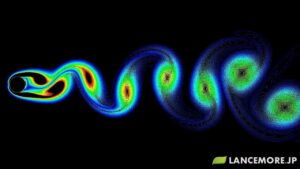


Singing Buildings: Tonal Wind Induced Noise Caused by Façade Elements
Whenever a new development is built, it impacts the way in which wind moves through an area. This is not a consideration that you may immediately associate with acousticians, however, in tall buildings with certain types of façade elements, it can be a real acoustic problem.
Wind flow across any building will generate noise – this is due to turbulent airflow around the edges of the building. At higher wind speeds this is generally audible as a broadband or slightly tonal ‘wooshing’ sound. People are generally familiar and accustomed to this noise and therefore it is rarely considered to be a problem.
However, under certain conditions, wind can cause building elements to vibrate which can potentially generate high noise levels.
It is quite rare for this to be a problem, however, when it is, it can be quite dramatic.
The weird ‘alien like’ sound that can be heard in the video is caused by the vibration of the ‘blades’ on the roof of the building. This vibration occurs at certain wind speeds and directions.
The phenomenon that causes the blades to vibrate is known as ‘vortex shedding’. Vortex shedding occurs when a fluid (e.g. air) passes over an object. Alternating low and high pressure vortices are created downstream of the object, which result in alternating lateral forces on the object. These alternating lateral forces cause the object to vibrate.
The speed of the air flow and the size and shape of the object will dictate the frequency of the vibration. If the frequency of the vibration is the same as the natural resonant frequency of the façade element, or if the wavelength of the vortex shedding frequency is equal to the spacing of repeating façade elements (e.g. solar shades), then extremely large resonances can occur. These large resonances are what generate the high noise levels.

Smaller façade elements tend to be most susceptible to tonal wind induced noise, such as architectural baguettes, solar shades, cables, small apertures etc. This is because the natural resonant frequency of these objects are more likely to be in the audible frequency range (20-20,000Hz).
There are general guidelines that can be followed to minimise the risk of vortex shedding problems in the design of new buildings:
- Any circular façade elements with a diameter of less than 50mm should be avoided where possible.
- Where small façade elements are required, ensure the façade elements are sufficiently damped and consider modifying the design of the façade elements to break up vortices (this can be achieved by adding fins or other design features designed to break up vortices).
- If repeated façade elements form part of the development design, they should be spaced irregularly to avoid periodic vortices becoming established.
Testing and modelling can also be carried out to further assess whether any issues are likely to occur including:
a) Modelling the façade elements using Computational Fluid Dynamic (CFD) software or;
b) Conducting tests of the façade elements in a wind tunnel.
If you would like guidance relating to tonal wind induced noise or any other acoustic aspect of your project, please contact us and we would be happy to assist.
If you’ve found this article interesting, have a look at these other examples of vortex shedding occurring in various contexts; some of them are quite dramatic!
Cloud formations around madeira
Aeolian Harp – an instrument that sings in the wind as a result of vortex shedding








